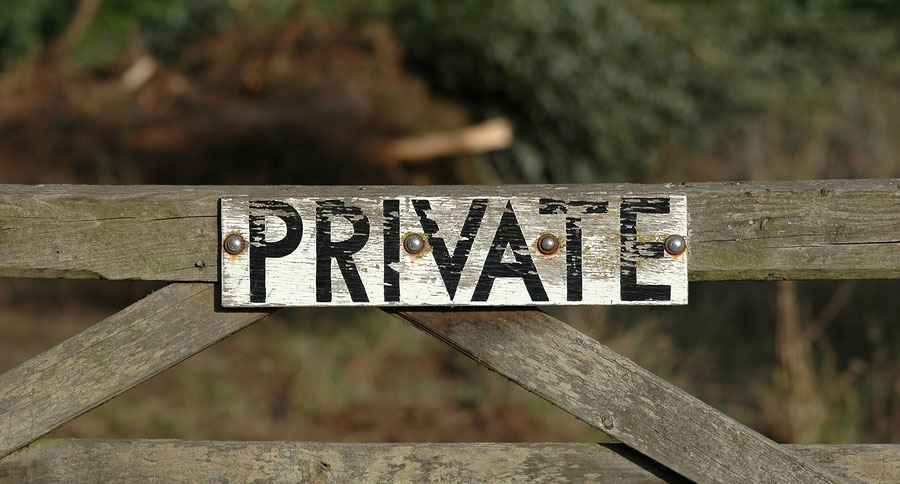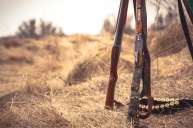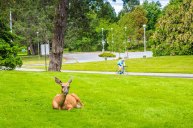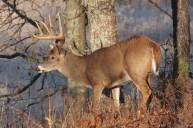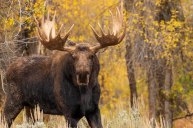The state will pay property owners a hefty sum to let people come hunt deer on their land.
The Washington Department of Fish and Wildlife is turning to landowners for help in addressing its serious overpopulation of deer, specifically in San Juan and Island Counties.
In an effort to recruit more hunters, state officials are offering landowners up to $1,000 in exchange for letting hunters shoot deer on their land, which will be funded by the United States Farm Bill.
Deer have become such a serious problem in the islands that they've actually become a legitimate threat for birds, insects and native plants and habitats across the islands.
"Humans largely extirpated the predators on the islands as far back as the 1860s," WDFW biologist Ruth Milner said in a press release. "And, with fewer people hunting the islands, deer are over-browsing native vegetation, which means less habitat for other species."
This region of Washington is similar to Texas in its shortage of public land, making it very hard to manage wildlife on a large scale. It also makes hunter recruitment more difficult because locals have no where to really hunt.
"It is a win-win-win for the islands," said Rob Wingard, a WDFW private lands access manager. "If a property meets the criteria for a safe and productive hunt, we can work together with landowners to help native species, reduce islanders' problems with deer and traffic hazards, and provide a unique experience for hunters seeking new places to find plentiful deer."
Landowners only need 5 acres to qualify for the program.
"If your land qualifies, you can make up to $1,000 and provide benefits to native species," Wingard said.
After enrolling, qualified landowners will have the luxury of deciding how many hunters can hunt at a time, as well as when and where they can hunt. However, they won't be allowed to decide who specifically gets to hunt.
The state will also provide landowners with liability protections, per Washington state law, and will assess the land to ensure it's safe.
"Deer are native to the islands and a valuable component of the ecosystem," Milner said. "That said, their high populations are decimating plants that are food for a whole host of other species, so we are looking for ways to reduce their numbers."
NEXT: MARYLAND AUTHORITIES OFFERING UP TO $10,000 FOR LEADS ON EAGLE, OWL POISONINGS
WATCH
https://rumble.com/embed/u7gve.v3tsdx/
